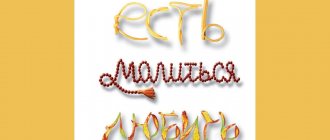They smile at you, say beautiful words, but how sincere is it, would you be interested to know? Or, you came to a meeting and it is extremely important for you that this meeting goes in your favor, how can you non-verbally tune a person to your wavelength? Read people like a book: unpack their gestures, facial expressions, body movements, know what they are really broadcasting to the world, should we continue to communicate with this person and should we trust? This is all real.
Knowing some secrets of the science of physiognomy, studying the alphabet of gestures in the psychology of communication, and also developing attentiveness and observation, you will see people from the inside and feel the real picture of what is happening.
In this article:
What is physiognomyNonverbal signalsTypes of nonverbal information and signalsWhat is congruenceHow to determine that your interlocutor of the opposite sex likes you
2Robert Cialdini “Psychology of influence. Inspire, control, defend"
Do you want to hear “yes” in response to your suggestions, requests and comments? Robert Chaldin's book has long become a classic of business and psychological literature. In it, the author shows how hidden mechanisms of influence work and offers specific techniques that increase the likelihood of agreement to the maximum. At the same time, Chaldney teaches you to notice when such techniques are used against you, and explains how to protect your mind from them. The book has been translated into 40 languages and sold more than 3 million copies worldwide.
Quiz: Can you work from home?
“Characters and personality disorders”, V. P. Rudnev
Inna Semikasheva
Candidate of Psychological Sciences, Associate Professor of the Department of Psychology, Ulyanovsk State Pedagogical University. I. N. Ulyanova
Reading, however, is for intellectual readers, but very exciting. Describes the main types of characters using examples from classical literature.
Each person is unique, and character determines how we perceive reality and look at the same things. And to understand other people, you need to know how each of them sees this world.
The book will help you change the perception of yourself and the people around you and will make you think differently about your own mistakes. This is a work about the characteristics of human characters, defense mechanisms and personality and mental disorders, including depression, hallucinations and paranoia.
3Lillian Glass “Everyone lies. How to detect deception by facial expressions and gestures"
Doctor of Psychology Lillian Glass worked as an expert on the world's largest television channels, giving lectures on body language and lies to employees of various law enforcement agencies, including the FBI. Serves as a forensic consultant, behavioral analyst, and dispute resolution mediator. In her book, Glass shares the quick and easy approach she uses to recognize lies—from “innocent” petty deceptions to shameless lies that can change lives.
How does an honest person behave?
- Calmly maintains eye contact, is open to communication, leans towards the interlocutor during a conversation. Keeps himself calm and confident. Can nod and carry on a calm conversation. Likes to gesticulate, arms open, palms down, saying “everything is fair.” The legs are in a calm state, standing side by side or thrown one behind the other, but without sudden movements. Turns his whole body and feet towards the interlocutor.
- The facial expressions are lively , a light and lively smile is visible on the face, always sincere, you can feel it, the fun is transmitted to others. The smile is transmitted to the corners of the eyes, which also “laugh.” The facial expression always corresponds to the emotions and words experienced; if a person is sad or upset about something, it’s immediately obvious; he doesn’t pretend that everything is fine.
- Speech can express different feelings and emotions, which is reflected in the voice. The tone of voice corresponds to the mood, situation, feelings. The voice changes depending on the topic of discussion, tries to pronounce words clearly, the voice is deep, low, sonorous, we often hear optimism and cheerfulness.
The psychology of human behavior, facial expressions and gestures help to learn to understand people, their state, mood, to find a special approach to everyone, to distinguish sincerity from the desire to please or deceive. Gestures and facial expressions provide a lot of information, but the voice is also a reflection of a person, allowing you to learn more about the inner world and state at a particular moment in time.
5Bohr Stanwyck “We are all in time. How lying, cheating and self-deception make us human"
Lying is not always bad, sometimes it is useful, and sometimes it is simply vital. The book contains many examples of “good” deception - in human society and in the wild. The entire history of civilization is permeated with deception. Why has this phenomenon taken root in our society? Why does a lie attract us so much that even a feeling of guilt does not force us to give it up? The book will find answers to these questions. But the main thing is that the author suggests by what signs you can understand that they are lying to you, and by what signs - that you are deceiving yourself.
About attempts at manipulation
Famous psychologists Paul Ekman, Alan Pease, Robert Cialdini, authors of many popular books on psychology.
They talk in detail about methods of manipulation and techniques that help “count” them. Here we will list the main ones available for you to use in ordinary life situations.
Here are the main ones that you simply must notice so as not to be fooled:
- At the moment of answering your question, the interlocutor: speaks in a higher tone, or makes frequent pauses in his speech, introduces a lot of unnecessary details, or speaks very slowly, choosing his words, while taking a “closed” pose, moving away from you. Two or more of these symptoms at the same time may mean lying and an attempt to avoid answering.
- The character turns his entire body away from you, averts his eyes to the side, changes an open pose to a closed one, crosses his arms over his chest or hides his palms in his pockets, covers his mouth with his palm - probably he is not being completely honest with you now.
- A long, direct, hard look at you can mean hidden aggression, an attempt to “suppress” the interlocutor, and again hide the truth.
- Does the interlocutor repeat the same thing, but in different forms and in different words? He definitely wants to instill some idea in you, and therefore he “talks” about it. Be careful - this is an attempt at manipulation!
- A very sure sign of dishonest behavior, a “stone behind the soul” is facial asymmetry. It is believed that the hemispheres of the brain are responsible for our various qualities and processes. That is why it is difficult to force the left side to lie; it reflects true feelings. The right side represents what a person wants to portray while pretending.
- Scientists have found that a lie can be given away by the nose! It may turn red and suddenly begin to itch. A liar and manipulator can also often touch or rub his nose. By the way, this symptom was confirmed by Bill Clinton himself when he swore in court that he had nothing “like that” with Monica!
- And one more thing - if a person suddenly begins to speak in a louder voice, answering questions or parrying, this may also indicate that he is telling a lie and has bad thoughts and intentions.
Watch the video on how to learn to read people:
7Thomas Erickson “There are only idiots around. If it seems so to you, perhaps it doesn’t seem so to you.”
Scandinavian bestseller on communication psychology. It went through four reprints in Sweden. Being a universal master key to the personality of any person, this book is on the desk of almost every Swedish leader, teacher and journalist. Its author, the famous Scandinavian psychologist Thomas Erikson, divides all people into four color types. It describes the logic of behavior, temperament, and value system of representatives of each color. Explains how to find a common language with them, lead projects, resolve conflicts and establish partnerships.
What is physiognomy
Photo by Ehsan: Pexels
Physiognomy (from the ancient Greek words meaning "nature" and "interpretation") is a method
determining a person’s personality type, his mental qualities and state of health, based on an analysis of external facial features and his expression. In physiognomy, there are 10 facial features:
- Forehead - character traits.
- Eyes are a reflection of intelligence.
- Cheekbones are a sign of strength.
- Nasolabial folds are a symbol of life expectancy.
- Eyebrows symbolize power.
- Chin is strength of character.
- Ears are a symbol of life potential
- The nose is a symbol of wealth.
- The mouth is a symbol of individuality, sexuality and sensitivity.
- The hollow above the upper lip is a symbol of sexuality and fertility.
By studying this method, you will find it very interesting and exciting to recognize a person’s character and inclinations by external signs.
8Jack Schafer, Marvin Karlins “Turning on the charm using the methods of the secret services”
This book is a guide to communicating with and influencing people from former FBI agent Jack Schafer, who specialized in behavioral analysis, training and recruiting agents. In it, he covers all the necessary techniques that will allow you to win friends and make a good impression. Thanks to this book, you will be able to identify lies - both in personal communication and in online conversations; make a great first impression; use nonverbal cues; understand the behavior of others and see what they really think about you.
Why didn't the VKontakte scammer's dirty trick work?
Just the other day, my old classmate wrote that it’s Black Friday, the discounts are crazy. He’s like: Andryukh, I urgently need 12 mowers - borrow them for me. And he is such a not poor man, he owns a trading company. And 12 thousand rubles is not a problem for him at all.
I answered him, and it was also strange that he didn’t write anything to me. This was buzzing for a reason: as a result, a few days later he writes that he was hacked by scammers and tried to get money out of his contacts.
It is important to know that usually such things are now done with the help of bank cards: they say, throw it at me on such and such a card. And the bank card is tied to a specific individual, so the police successfully help in such cases.
If you collect all the information and clearly describe it to the police, then gradually enough evidence will be collected against this fraudster, one way or another, or a group of people and they will simply be put behind bars. Then they will not harm honest people, and other similar cunning people will not be accustomed to do this.
When people look objectively at the facts and compare them, they are not inclined to fall for the tricks of scammers. This is not so easy to do, because each person has certain blind spots, keys, buttons. And experienced scammers know them well.
They know that refusing to give money to a friend is inconvenient. That you won’t ask much if you can’t give him some money. There are various human things that they play on. Often people fall for this whole thing and end up in trouble.
10Allan Pease “Speak exactly... How to combine the joy of communication and benefit”
Everyone knows how and loves to talk, but choosing the right topic and intonation, clearly formulating and clearly expressing your thoughts, engaging your interlocutor in a confidential conversation, convincing him that you are right is a whole art. The book by the famous expert on communication “technologies” Allan Pease will teach you to separate phrases of formal politeness from the grains of truth and decipher non-verbal signals given by the interlocutor. You will be able to appreciate your partner’s sincerity and correctly interpret his thoughts, and the ability to give compliments and listen carefully will allow you to achieve success not only in your personal life, but will also lift you to the top of your professional career and make you a “master of conversation.”
“Accented personalities”, K. Leonhard
The term “accentuation” was introduced by Leonhard. By this he understood overly expressed character traits, which are an extreme version of the mental norm and border on a pathological condition.
The book is written in lively and simple language, so it is quite suitable not only for professionals, but also for anyone interested in psychology.
Larisa Milova
In the work, which has become one of the most popular in the field of psychiatry, the author conducts a psychological analysis of accentuated personalities and analyzes examples from fiction.
11Aud Dalsegg, Inge Wesse “On the Hook: How to Break the Cycle of Unhealthy Relationships”
Is a hysterical boss keeping the entire office in fear? Does your best friend make you dance to his tune? Is your loved one a tyrant? Are your parents impossible to please? Does your child blame you for his failures? If you are in constant nervous tension, feel pathetic and worthless, or even feel afraid of those with whom you live or work, then perhaps you have come under the influence of a psychopathic personality. How to resist such people and get out of their masterfully placed networks, preserving yourself and your “I”? This is what the book by Aud Dalsegg and Inger Wesse is about, based on real stories.
5 Signs of an Energy Vampire: Ways to Protect Yourself
"Games People Play. Psychology of Human Relationships”, E. Bern
Ilya Shabshin
consulting psychologist, author of books on popular psychological topics, leading specialist at the Psychological Center on Volkhonka
Berne's model of the Inner Parent, Inner Adult and Inner Child is something that is very desirable for anyone who wants to understand other people (and themselves at the same time) to know.
The international cult bestseller is worth reading for those who are ready to go beyond the usual life scenarios, want to understand the motives of their actions and the behavior of other people and find out why conflicts arise. Bern believes that a person can change his destiny if he wants.
Buy a book
14Nikita Nepryakhin “I’m manipulating you”
They constantly try to manipulate us at work, school, at home and among friends, and politicians, the media and sellers even consider this their duty. Thanks to Nikita Nepryakhin's book, you will learn to quickly recognize any manipulator and neutralize his techniques. You will find a deep dive into the motives of manipulators, a detailed classification of their tricks, a large number of cases, examples, experiments and illustrations. As well as a detailed disclosure of manipulations in advertising, marketing, negotiations and sales, exposing politicians and the media.
“Why Good People Do Bad Things” by D. Hollis
A book about the dark sides of our soul. About why people gamble or drink excessively, do things that don't match our understanding of them.
Larisa Milova
Everyone has a shadow side, but not everyone is ready to admit it. It hides in the unconscious, but manifests itself in our actions and actions. Hollis writes how to recognize your Shadow, change behavior, overcome internal contradictions and learn to act consciously.
The book will be of interest to anyone who wants to find the strength to deal with “inner demons”, understand the essence and nature of the Shadow and find out what motivates other people when they commit certain actions.
Buy a book
15Simon George, Who's in Sheep's Clothing? How to recognize a manipulator"
This book is about manipulators who subtly ingratiate themselves into our trust and take advantage of our affection, kindness and inability to say “no” for their own purposes. Often we do not understand that someone is taking advantage of us unscrupulously, and when we realize this, it is already too late: we are devastated, humiliated and depressed. How to recognize manipulators and not give them the slightest chance? This is exactly what the famous American psychologist George Simon writes about. The classification of manipulative personalities, the way they act, methods of dealing with them - all this is in the book “Who's in Sheep's Clothing?”, which has become a world bestseller.
7 sure signs of a scoundrel man
We thank the publishing houses “Eksmo”, “AST”, “MYF”, “Alpina Publisher”, “Piter”, “Potpourri”, “Book Club “Family Leisure Club”.
Photo: PR, Fotolia.com
“Psychology of Women”, K. Horney
A book for those who want to learn to better understand women and see the differences in the psychology of women and men.
Larisa Milova
Horney disagreed with many of Freud's views regarding women. For example, with the fact that every woman envies a man’s penis and unconsciously wants to give birth to a son. For her point of view, she was expelled from the ranks of the American Psychological Association.
But this did not stop her from creating her own theory of the psychology of women, which is presented in the work. Horney touches on the topic of sexual dysfunction and social inequality, writes about the problems of marriage, motherhood, sexual relationships, femininity, love and fidelity.
Buy a book











